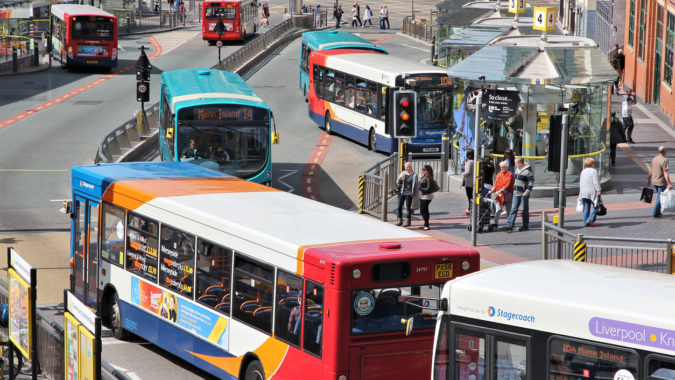In October 2015, the National Infrastructure Commission was asked to review the strategic case for additional large scale transport infrastructure in the capital and its region, with particular reference to proposals for a new north-east to south-west ‘Crossrail 2’ line.
Today (10 March), the Commission publishes that analysis.
The Commission’s central finding, subject to the recommendations within the report, is that Crossrail 2 should be taken forward as a priority.
Funding should be made available now to develop the scheme fully with the aim of submitting a hybrid bill by autumn 2019. This would enable Crossrail 2 to open in 2033.
Transport for a world city makes practical recommendations to this end:
Firstly, sufficient development funds should be released for Transport for London (TfL) and the Department for Transport (DfT) to prepare a hybrid Bill for Crossrail 2, beginning with a revised business case to be submitted by March 2017
Secondly, in developing the business case, it is crucial that TfL and DfT identify clear proposals to maximise its benefits and increase deliverability. They should:
- Identify proposals to phase costs and increase affordability – one option would be to delay the north-western branch to New Southgate, which could reduce costs of the initial scheme in the 2020s by around £4 billion.
- Deliver a funding plan in which London contributes its fair share to the project – more than half the total for the scheme.
- Develop a strategy to maximise private sector involvement in the development and funding of stations and their surrounding areas.
- Develop a strategy to ensure the construction of at least 200,000 homes along the route.
Subject to these recommendations, the aim should be for a hybrid bill should be submitted by autumn 2019, and the line should be opened in 2033.
Lord Adonis said:
“By the 2030s London will be a megacity of more than 10 million people. Even allowing for planned investment and the imminent arrival of the East-West Crossrail line, the capital will grind to a halt unless significant further improvements are made.
“That’s why London needs Crossrail 2 as quickly as possible. A new North-East to South-West line would help relieve severe overcrowding across some of the busiest Network Rail stations in the country, and the most congested Underground lines and overground commuter routes.
“The Commission has identified four crucial ways in which the scheme can be developed to ensure that we maximise benefits and increase deliverability: phasing parts of the scheme, fair funding with London paying more than half the cost, private financing to help build stations and, crucially, a clear, transformative strategy to turn the proposed 200,000 new homes into a reality.
“There is no good reason to delay. Crossrail 2 will help keep London moving, create hundreds of thousands of homes and fire regeneration across the city form North-East to South-West. We should get on with it right away, and have the line open by 2033.”
Transport for a world city: in brief
By 2030 London is likely to reach megacity status, with a population exceeding ten million. Even allowing for planned investment much of its transport network will be under severe pressure, and there is already an acute housing shortage.
In this context the National Infrastructure Commission has been asked to examine proposals for significant new public transport infrastructure in London.
The Commission’s central finding, subject to the recommendations made in this report, is that Crossrail 2 should be taken forward as a priority.
Funding should be made available now to develop the scheme fully with the aim of submitting a hybrid bill by autumn 2019. This would enable Crossrail 2 to open in 2033.
Part 1: preparing for the 2030s
Current and proposed transport investment, including on the Underground network and Crossrail 1 (the ‘Elizabeth Line’), is essential. But more will be needed.
The commission has identified four specific challenges from the late 2020s: crowding on key Underground lines, lack of capacity on commuter service rail routes and at major Network Rail stations, insufficient orbital links particularly in east London, and the need for transport to promote significant housing growth within and around the capital.
Congestion is forecast to be especially acute on north-south Underground lines, commuter rail services in the south-west, and at major Network Rail stations on these routes.
Part 2: developing the plan
Faced with these challenges, a second Crossrail line, running south-west to north-east, is a priority for London and its region.
Crossrail 2 will provide a new central London artery linking the suburban railway network in the south-west to lines in the north-east via a brand new tunnel from Wimbledon to Tottenham Hale. This relieves or reinforces major suburban and Underground lines and a string of Network Rail’s busiest stations, whilst opening up new areas for housing and regeneration.
Part 3: from development to delivery
Considerable work has been done to develop the case for Crossrail 2. This report recommends four steps to develop the scheme further:
- identify proposals to phase costs and increase affordability
- develop a strategy to unlock significant housing growth
- deliver a funding plan in which London contributes its fair share to the project
- maximise private sector involvement in the development and funding of stations and their surrounding areas
Following a resolution on the areas above, the aim should be for a hybrid bill to be submitted by autumn 2019 – the first step towards the railway opening in 2033.
In detail
London’s population will be 10 million by 2030 (8.6 million today) meeting the definition of a ‘megacity’.
There were 1.3 billion journeys on London underground last year – (34% more than 10 years ago with 976 million, 71% more than 20 years ago 764 million, 94% more than 30 years ago).
National Rail Journeys in London have more doubled in the last 20 years (in 1995 there were 379 million journeys to/from within London in 2015 that was 878 million).
London is expected to add 800,000 jobs in the next 20 years.
London accounts for 13% of the UK’s population. Its total nominal Gross Value Added is around 20% of the UK total.
The Commission identified four specific challenges for London from the late 2020s.
Crowding on key Underground lines
There were 1.3 billion journeys on London underground last year – (34% more than 10 years ago with 976 million, 71% more than 20 years ago 764million, 94% more than 30 years ago).
The modelling done by TfL and contained in the report shows that Victoria, Northern and Central lines have sections where crowding is causing operational difficulties in the 2030s. (TfL modelling, National Infrastructure Commission: Transport for a world city report – Annex A p68).
The number of passenger kilometres travelled in crowded conditions will increase 50% by 2031. (TfL modelling, National Infrastructure Commission: Transport for a world city report – page 18).
Lack of capacity on commuter service rail routes
National Rail Journeys in London have more doubled in the last 20 years (in 1995 there were 379 million journeys from and within London in 2015 that was 878 million).
Lack of capacity at major Network Rail stations, insufficient orbital links
Waterloo, Victoria and Clapham Junction – already some of the busiest stations in the UK are all expected to see passenger numbers increase by 40% by 2031. (TfL modelling, National Infrastructure Commission: Transport for a world city report – page 25).
Need for transport to promote significant housing growth within and around the capital
On average over the last 10 years, London has been building fewer than half of the 49,000 homes it needs to be built each year. Transport connectivity is a key reason why housing is not being built.
No other proposed scheme addresses so many of London’s strategic needs. Crossrail 2 could:
- Provide vital relief for the congested southern end of the Northern Line and for the Victoria Line through north-east and central London. These are forecast to see much of the highest levels of crowding anywhere on the Underground, after the opening of Crossrail 1.
- Provide an alternative route, via its connection to Crossrail 1, from south-west London to the City and Canary Wharf, reducing passenger numbers on the overcrowded Waterloo and City line and the eastern part of the Jubilee Line.
- Relieve capacity constraints on the critically over-crowded south-west London commuter lines coming into the capital through Wimbledon, Clapham Junction and Waterloo by providing an alternative route for inner suburban services via a new tunnel from Wimbledon into Central London.
- Reduce terminal congestion at the UK’s busiest station, Waterloo, as well as cutting crowding levels at Clapham Junction, Vauxhall and Wimbledon, all of which are forecast to face insuperable operational difficulties due to the volume of passengers at peak hours.
- Release capacity on the existing south-west network for longer distance services from Basingstoke, Woking, Guildford, Southampton and beyond.
- Provide four tracks on the West Anglia Mainline to enable faster services on the London-Stansted-Cambridge Corridor.
- Link with Euston / St Pancras, to provide onwards dispersal for those arriving into London from the north on HS2, which is planned to be completed to Manchester and Leeds in 2033.
- Stimulate new housing, jobs and development along the whole route. In particular the line will transform access to the Upper Lee Valley Opportunity Area – one of the largest in London.
- Establish a turn-up-and-go level of service at a range of underserved destinations allowing for regeneration around transport hubs in Hackney, Haringey, Enfield and Tottenham.
- Unlock 200,000 homes, provided the right planning framework is applied



